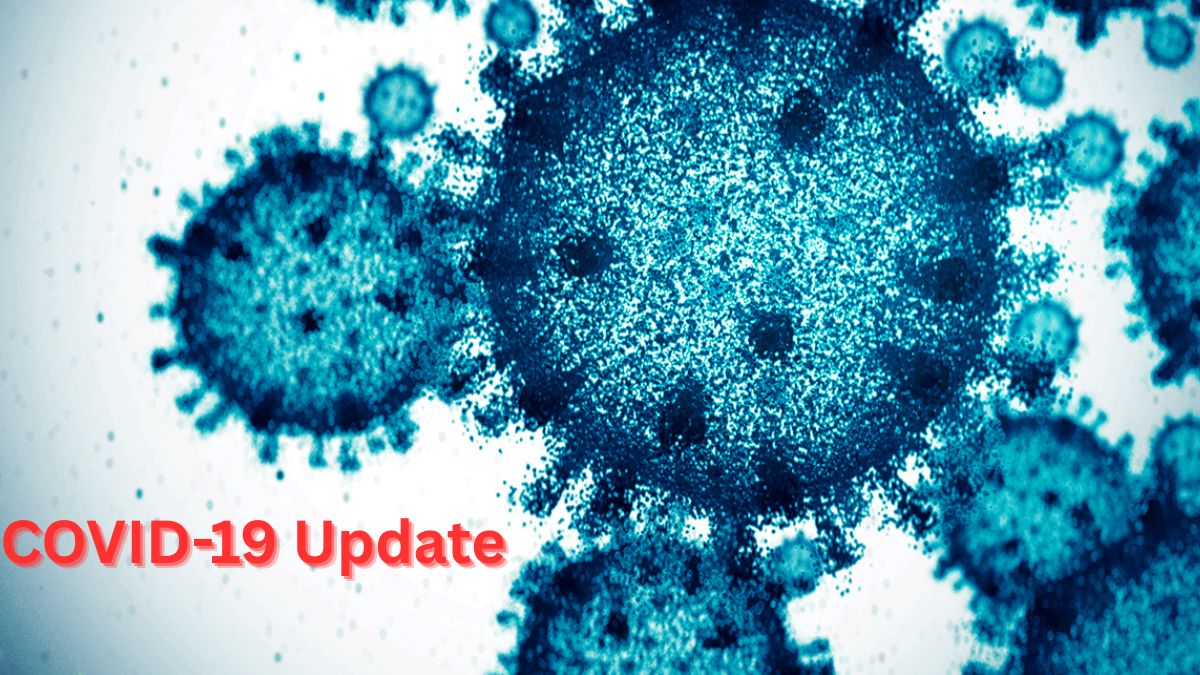Young Adult Grief Support: P.E.A.C.E. Method for Parents
As I watch my son grieve the loss of another close friend only a month and a half after losing the first, it reminds me that we are in a time where parents have to prepare to discuss conversations of loss not just for grandparents, older relatives and friends, but for the loss of their peers. While college should be a time of parties, spring break trips, challenging classes, and new relationships, today's young adults are increasingly confronted with something far more sobering: the death of their peers. As parents, our instinct is to comfort with promises that "everything will be alright"—but we know that's not always true. And watching your child navigate this raw, uncharted territory of grief hits you in ways you never anticipated—their pain becomes your pain, magnified by your own helplessness to fix what cannot be fixed.
The statistics paint a sobering picture of young adult mortality. Suicide was the second leading cause of death among people ages 20-24 in 2021, accounting for 16.8% of deaths. Homicide was the third-leading cause, responsible for 15.6% of deaths in this age group. The five leading causes of death among teenagers are unintentional injuries, homicide, suicide, cancer, and heart disease, with accidents accounting for nearly half of all teenage deaths.
Friends forming their network of grief support after the loss of a friend
PHOTO CREDIT: Darlene StegallThese aren't just numbers—they represent someone's child, friend, classmate, or romantic partner. Behind every statistic is a young person who will never graduate, never marry, never chase their dreams. They represent the friend who made your child laugh until their sides hurt, the study buddy who shared late-night coffee runs, the roommate who became like family. They represent futures cut short, inside jokes that will never be told again, and empty chairs at birthday parties. These are the young adults our children love and lose far too early, leaving holes in their hearts that reshape how they see the world.
Understanding why today's young adults face unprecedented loss requires recognizing the convergence of multiple risk factors that no previous generation has experienced simultaneously. This isn't about individual failings—it's about a generation navigating a fundamentally different and more dangerous landscape.
Several factors make the twenties particularly hazardous years for young Americans. This is the age of considerable risk-taking, combined with the time when many young adults lose their financial and institutional safety net. Risk-taking behavior, mental health challenges, substance use, and limited healthcare access all contribute to increased mortality. Additionally, young adults today face unprecedented stressors including social media pressure, economic uncertainty, and social isolation that previous generations never encountered.
The neurological reality of young adulthood creates inherent vulnerability. Brain development continues until approximately age 25, with the prefrontal cortex—responsible for impulse control and decision-making—being the last region to mature. Young drivers aged 16-24 are involved in 22.8% of all accidents despite representing only 11.2% of licensed drivers, highlighting how this developmental stage intersects with external risks.
Mental health challenges have reached crisis levels. Young adults aged 18-25 have the highest prevalence of mental illness at 36.2%, compared to just 13.9% for adults over 50. More alarming, 50% of adults aged 18-24 reported anxiety and depression symptoms in 2023, and 12.2% had serious thoughts of suicide in the past year. The fentanyl epidemic has made substance experimentation exponentially more dangerous, with drug overdose deaths quadrupling from 8.2 per 100,000 in 2002 to 32.6 per 100,000 in 2022.
While accidents, suicide, and homicide dominate the statistics, medical conditions also claim young lives unexpectedly, creating additional sources of peer loss that parents may not anticipate.
About 80,000 young adults aged 20 to 39 are diagnosed with cancer each year in the United States, and about 9,000 die from cancer annually. Cancer is the fifth leading cause of death in this age group. For adolescents aged 15 to 19, about 5,000 to 6,000 are diagnosed with cancer each year, with 500 to 600 dying annually.
Affecting one in 26 people, with about 48 of every 100,000 people diagnosed each year, individuals with epilepsy die at a rate of 9.55 per 1,000 patient-years—more than three times that of the general population. The impact is particularly severe among young people, with 9.3% of those who died under age 50 having epilepsy, and children with epilepsy facing mortality rates fifty times higher than their peers without the condition.
also affects young adults, particularly those with underlying health conditions or genetic predispositions. These medical-related deaths often come without warning, making them particularly difficult for friends and family to process.
Before diving into how to help, it's crucial to understand that losing a friend during young adulthood creates a unique type of grief that differs significantly from other losses. This understanding will inform every aspect of your support strategy.
Losing a friend during young adulthood hits differently than other types of loss. These are peers who were supposed to grow old together, attend each other's weddings, and watch their children play together. The loss shatters assumptions about the future and forces young adults to confront their own mortality, often for the first time.
They might become anxious about their own health or safety, or engage in risky behavior as a way of processing their pain. Understanding these reactions helps parents provide appropriate support. Young adults may also experience what psychologists call "assumptive world disruption"—the fundamental beliefs about safety, predictability, and fairness in the world are suddenly challenged.
Hands, love and care touching in support, trust or unity for community, compassion or understanding. ... More People holding hands in respect for loss, affection or passion for listening, talk or time
gettyWhile individual differences are significant, research suggests gender-based patterns in grief processing that can inform your support approach.
might be more likely to suppress emotional expression, engage in risk-taking behavior, or use substances to cope with grief. They may also be less likely to seek support from others, preferring to process grief through action or solitude. However, avoid imposing expectations—some young men need to cry and talk about their feelings.
might be more likely to seek social support and express emotions openly, but they may also be more prone to rumination or developing anxiety around their own safety or health. They might worry excessively about other friends or family members, creating secondary stress.
Regardless of gender, follow their lead rather than your assumptions about how they "should" grieve.
When supporting a young adult through grief, remember the acronym P.E.A.C.E. This framework provides a structured approach to helping while acknowledging that grief is deeply personal and non-linear. Think of this as your roadmap through an otherwise overwhelming situation.
Creating emotional safety means being available without judgment. This isn't about having all the answers—it's about being present and consistent.
"I'm here for you, no matter what you're feeling." "Your grief matters to me." "This is a safe place to fall apart if you need to."
Phrases like "everything happens for a reason" or "they're in a better place now," which can minimize their pain. Resist the urge to share your own loss experiences unless specifically asked.
Grief looks different for everyone, and your role is to support whatever form of expression feels natural to them, not what you think grief should look like.
"How are you feeling today?" "What do you need right now?" "Would it help to talk about [friend's name]?" "How can I support you through this?"
Don't expect linear progress. They might seem better one day and devastated the next. This is normal grief, not regression. There's no set timeline for grief, but most young adults begin experiencing some relief from acute grief symptoms within 6-12 months. The first three months are typically the most intense. However, grief waves can continue for years, especially around anniversaries or significant dates. Be concerned if they're unable to function in daily life for extended periods or if their grief seems to be getting worse rather than gradually becoming more manageable after 6-12 months.
One of the most powerful things you can do is simply validate that their pain is real, significant, and worthy of attention.
"This really sucks, and I'm sorry you're going through this." "Your friend was clearly very important to you." "It makes complete sense that you're struggling." "I can see how much you're hurting."
Don't say "At least you have other friends" or "You're young, you'll make new friends." Each relationship is irreplaceable.
Grief can be profoundly isolating, but it can also create powerful bonds with others who understand the loss.
Social media can be both helpful and harmful. Help them set boundaries around when and how they engage with posts about their friend.
Knowledge and tools can provide comfort and direction during the chaos of grief.
Sometimes the most helpful resource is simply knowing that professional help is available if they need it, even if they're not ready yet.
While grief is natural, sometimes it becomes complicated or overwhelming, requiring specialized intervention. Understanding the difference between normal grief and concerning patterns can be lifesaving.
Most young adults begin to experience some relief from acute grief symptoms within 6-12 months, though grief waves can continue for years. The first three months are typically the most intense, with gradual improvement in daily functioning over the first year.
When a young adult loses a friend to suicide, the grief becomes even more complex, requiring additional vigilance and support.
The complex emotions and increased risk factors require specialized grief counseling that understands suicide bereavement.
Supporting a grieving young adult while managing your own emotions about their loss requires intentional self-care strategies. Your emotional stability directly impacts your ability to provide effective support.
You may be grieving the young person who died, especially if you knew them. You're definitely grieving watching your child suffer. Both of these feelings are valid and need attention.
Continue your friendships, exercise routine, spiritual practices, or therapy. Isolating yourself doesn't help anyone and depletes your emotional reserves.
You cannot fix your young adult's grief or take away their pain. Your role is to walk alongside them, not to cure them.
If you find yourself overwhelmed, anxious, or unable to cope, seek your own professional support. Many therapists specialize in helping parents navigate their children's crises.
Grief recovery isn't linear, and your young adult may seem "better" one day and devastated the next. This pattern can be exhausting for caregivers.
While grief changes people, it doesn't have to destroy them. Most young adults do learn to carry their loss while still engaging fully with life, though the timeline varies significantly.
Hope in the Darkness
As I finish writing this, my son is slowly finding his way through the fog of losing two friends in such a short time. Some days are harder than others, but I'm learning that grief isn't something to "get over"—it's something to grow around. The P.E.A.C.E. method has become our family's compass through this difficult journey, reminding me that my role isn't to fix his pain but to provide steady, loving support as he learns to carry it.
Here are the four key takeaways every parent should remember:
While I cannot promise that everything will be alright, I can promise that with patience, understanding, and the right support, young adults can learn to honor their lost friends while still building meaningful lives. The love doesn't end with death—it transforms. And sometimes, that transformation, though painful, can deepen our capacity for compassion, connection, and appreciation for the precious gift of life itself.
Your young adult's grief is real, their pain is valid, and your support matters more than you know. Trust the process, trust your instincts, and remember that healing doesn't mean forgetting—it means learning to carry love forward.
Charell G. Coleman is Teen & Adult Wellness Writer, Children's Book Author and mother of two. She is a Trauma Survivor turned Healing Advocate writing new beginnings and endings.
Centers for Disease Control and Prevention. (2024). FastStats - Adolescent health. https://www.cdc.gov/nchs/fastats/adolescent-health.htm
Centers for Disease Control and Prevention. (2023). Mortality in the United States, 2023 [Data brief No. 471]. https://www.cdc.gov/nchs/products/databriefs/db471.htm
Cunningham, R. M., Walton, M. A., & Carter, P. M. (2018). The major causes of death in children and adolescents in the United States. New England Journal of Medicine, 379(25), 2468-2475. https://pmc.ncbi.nlm.nih.gov/articles/PMC6637963/
Hedegaard, H., Curtin, S. C., & Warner, M. (2021). Increase in suicide mortality in the United States, 1999-2018. NCHS Data Brief, 362. https://pmc.ncbi.nlm.nih.gov/articles/PMC6582264/
Horváth, R. A., Fogarasi, A., Schulz, R., & Vörös, E. (2022). Analysis of nationwide mortality data in Hungary reveals increased mortality in epilepsy patients. Seizure, 96, 119-125. https://www.seizure-journal.com/article/S1059-1311(21)00371-X/fulltext
Kløvgaard, M., Lynge, T. H., Tsai, M. C., Poulsen, F. R., Olsen, A., Plenge, P., Winkel, B. G., & Tfelt-Hansen, J. (2022). Epilepsy-related mortality in children and young adults in Denmark: A nationwide cohort study. Neurology, 99(10), e1022-e1032. https://www.neurology.org/doi/10.1212/WNL.0000000000013068
Xu, X., Chen, L., Wang, Y., Zhang, Y., & Liu, J. (2025). Mortality in patients with epilepsy: A systematic review. European Journal of Neurology, 32(2), e16078. https://pmc.ncbi.nlm.nih.gov/articles/PMC11937074/
American Cancer Society. (2024). Key statistics for cancers in young adults. https://www.cancer.org/cancer/types/cancer-in-young-adults/key-statistics.html
American Cancer Society. (2024). Teenage cancer statistics. https://www.cancer.org/cancer/types/cancer-in-adolescents/key-statistics.html
Kaiser Family Foundation. (2023). A look at the latest suicide data and change over the last decade. https://www.kff.org/mental-health/issue-brief/a-look-at-the-latest-suicide-data-and-change-over-the-last-decade/
Parker, K., & Igielnik, R. (2024). Young adults' economic and family milestones today vs. 30 years ago. Pew Research Center. https://www.pewresearch.org/social-trends/2024/01/25/key-milestones-for-young-adults-today-versus-30-years-ago/
Tulane University School of Public Health. (2024). Understanding the effects of social isolation on mental health. https://publichealth.tulane.edu/blog/effects-of-social-isolation-on-mental-health/










